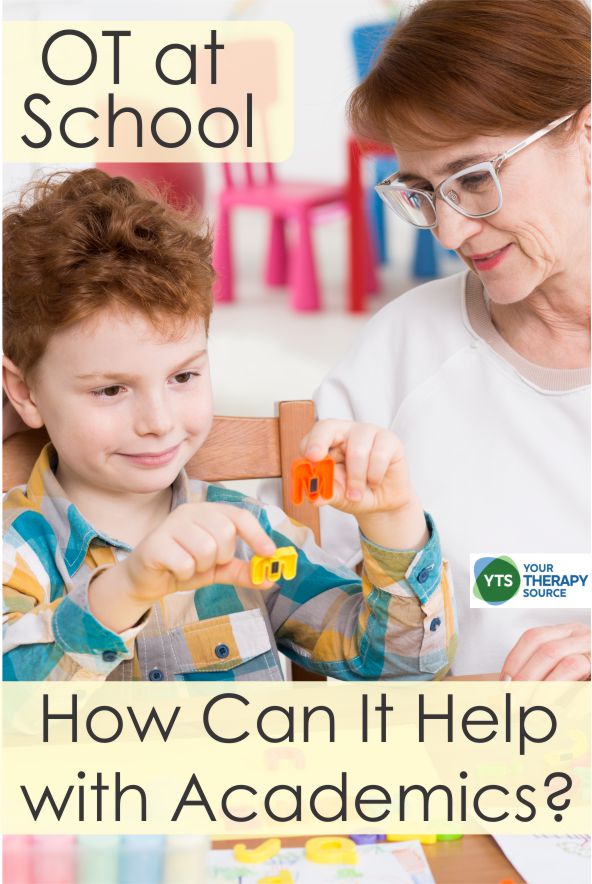Occupational Therapy in the School Setting Can Help with Academics, Learning and Participation

Recent research explored occupational therapy in the school setting and how it can help with academics, learning and participation. The American Journal of Occupational Therapy completed a systemic research review on the topic.
The goal of the research was to determine the effectiveness of occupational therapy interventions to improve academic participation of children and youth ages 5–21 yr.
What did the Research Say About Occupational Therapy in the School Setting and How It Can Help?
After searching for data, 46 studies were included in the research review. There were three topics overall that were studied regarding OT interventions that supported:
- participation and learning in the classroom.
- motivation and participation in literacy, including combined reading, written expression, and comprehension
- handwriting.
Low Strength Evidence
Following data analysis, the researchers determined that there was low strength of evidence for the use of weighted vests and stability balls. In addition, there was low strength of evidence to support various handwriting programs as a replacement or additional instructional strategies to enhance handwriting abilities.
Moderate Strength Evidence
The researchers discovered moderate strength of evidence supports the use of yoga to enhance educational participation. There was also moderate strength of evidence to support the use of creative activities, parent-mediated interventions, and peer-supported interventions to enhance literacy participation.

Strong Evidence
There was strong evidence to support therapeutic practice for handwriting intervention.
Conclusion about Occupational Therapy In the School Setting
Occupational therapy in the school setting can be very beneficial for students. It is important for Occupational Therapists to make evidence based decisions to help students succeed. This research helps guide OT practice in the school. Here are some suggestions:
- make smart, data driven decisions and do not generalize the use of stability balls and weighted vests to enhance educational participation in classrooms.
- provide interventions that offer choices, creative engagement, collaboration with parents, and support by peers show to improve children’s attitudes toward literacy and participation in literacy activities.
- isolated skills training as an intervention to address prerequisite skills for handwriting does not translate to improved handwriting performance. Use prerequisite skills in interventions and apply them directly to handwriting tasks.
More research is needed to expand and support the effectiveness of interventions in addition to developing occupation-focused measures of educational participation.
Reference:
Lenin C. Grajo, Catherine Candler, Amanda Sarafian; Interventions Within the Scope of Occupational Therapy to Improve Children’s Academic Participation: A Systematic Review. Am J Occup Ther 2020;74(2):7402180030. https://doi.org/10.5014/ajot.2020.039016
Read More about School Based Occupational Therapy
Six Steps of Effective Service Delivery of School-Based Occupational Therapy
OT for Children with Disabilities – What Does the Research Say?
Resources for School-Based Occupational Therapists




